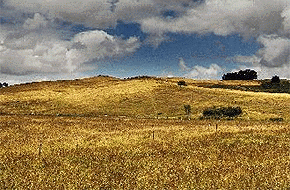
Was El Niño responsible for the 2013 drought?
It seems not, based on the chart below.
But it was dry and NIWA's forecasts were wide of the mark. In fact NIWA wasn't forecasting a drought, even in the middle of it. In February, NIWA said for the February to April period "rainfall is likely to be near normal for all regions but for the North of the North Island, where normal or above normal rainfall is forecast."
The following has been extracted from the NIWA website.
What is El Niño?
El Niño is a natural feature of the global climate system. Originally it was the name given to the periodic development of unusually warm ocean waters along the tropical South American coast and out along the Equator to the dateline, but now it is more generally used to describe the whole "El Niño - Southern Oscillation (ENSO) phenomenon", the major systematic global climate fluctuation that occurs at the time of the ocean warming event.
El Niño and La Niña refer to opposite extremes of the ENSO cycle, when major changes in the Pacific atmospheric and oceanic circulation occur.
When neither El Niño nor La Niña are present, (usually referred to as "neutral" or normal conditions), trade winds blow westward across the Pacific, piling up warm surface water so that Indonesian sea levels are about 50 cm higher than those in Ecuador. Cool, nutrient-rich sea water "wells up" off the South American coast, supporting marine ecosystems and fisheries.
Relatively cold sea temperatures also extend along the equator from South America towards the central Pacific. High rainfall occurs in the rising air over the warmest water to the west, whereas the colder east Pacific is relatively dry.
How does El Niño typically affect New Zealand?
New Zealand is not usually affected as strongly by El Niño conditions as are parts of Australia, but there is nevertheless a significant influence.
In El Niño years, New Zealand tends to experience stronger or more frequent winds from the west in summer, leading to drought in east coast areas and more rain in the west.
In winter, the winds tend to be more from the south, bringing colder conditions to both the land and the surrounding ocean.
In spring and autumn southwesterlies tend to be stronger or more frequent, providing a mix of the summer and winter effects.
La Niña events which occur at the opposite extreme of the Southern Oscillation Index cycle have weaker impacts on New Zealand’s climate. New Zealand tends to experience more northeasterly winds, which bring more moist, rainy conditions to the northeast parts of the North Island, and reduced rainfall to the south and south-west of the South Island. Therefore, some areas, such as central Otago and South Canterbury, can experience drought in both El Niño and La Niña. Warmer than normal temperatures typically occur over much of the country during La Niña, although there are regional and seasonal exceptions. The last La Niña event was in 2007/08.
Although El Niño has an important influence on New Zealand’s climate, it accounts for less than 25% of the year to year variance in seasonal rainfall and temperature at most New Zealand measurement sites.
East coast droughts may be common during El Niños, but they can also happen in non El Niño years (for example, the severe 1988-89 drought).
Serious east coast droughts do not occur in every El Niño, and the districts where droughts occur can vary from one El Niño to another (although some are more consistently affected than others).
However the probabilities of the climate variations discussed above happening in association with El Niño are sufficient to warrant management actions and planning to be taken when an El Niño episode is expected or in progress.
2 Comments
I think this drought was pretty much spillover from the weather being generated from the burnt heart of Australia. While those that think climate change is a conspiracy might reject this, I think it worth noting Australia released a report at the start of April basically saying "get used to this weather, it is the new normal".
http://www.radionz.co.nz/news/world/131894/australia's-climate-has-chan…
@dh
And who is to say last summer/autumn is not the new "normal"?
Here's hoping.


We welcome your comments below. If you are not already registered, please register to comment.
Remember we welcome robust, respectful and insightful debate. We don't welcome abusive or defamatory comments and will de-register those repeatedly making such comments. Our current comment policy is here.